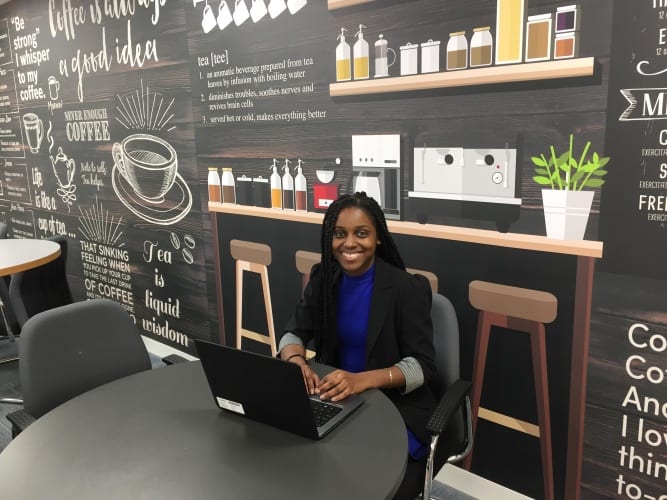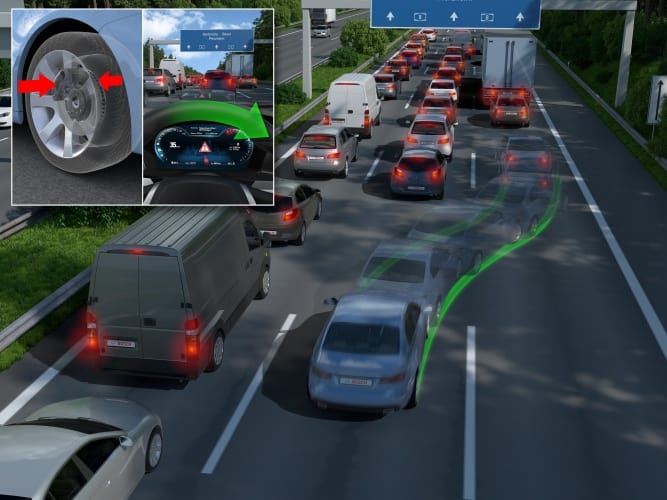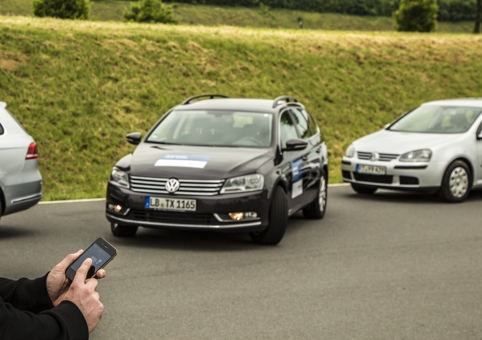
What led you to study motorsport technology, and what was the course like?
I’ve always been passionate about the automotive sector, especially racing. I’ve also always enjoyed being creative; the freedom to be creative and the satisfaction I get out of thinking up small ideas to make a big difference. Studies in motorsport seemed very logical to me from a young age.
At university, I enjoyed the course. However, I was the only female automotive engineer with an ethnic minority background in my graduating class. It’s very important to me to make a path for others like me to follow and also be able to show that engineering is a career of diversity.
How did you end up on the Bosch grad programme?
I found Bosch graduate positions on a job website and it seemed perfect, given the love I’d always had for all things automotive, particularly racing cars. Bosch seemed to be doing such interesting things, especially in the sphere of connected vehicles. It was a great decision and it is also a great place for me to continue learning and developing, which is important as I’m in a sector that is continuously evolving.

Did you get to experience different parts of the business or just automotive?
I focused on automotive in the graduate scheme. It’s a two-year programme with four different rotations, so there was a lot of variety. I did my four rotations in application, quality, project management and sales both in the UK and abroad. This allowed me to get really in-depth insights into Bosch and get the best possible perspective of the various functions within the teams.
Can you tell us about some of the interesting things you’ve worked on in connected mobility?
Bosch has a vision of what the truck will look like in 2026 so we are busy working towards making that a reality. Some of the interesting things we’ve been working on include our vision to make the truck driver’s workplace more intelligent and as easy to use as a modern smartphone. We are one of the companies researching the concept of platooning, where multiple connected trucks travel in a platoon with 10 to 15 metres between them, whilst following a lead vehicle. This would cut fuel consumption by up to 10 per cent and lower accident rates. We are also working on ways to use connectivity to help drivers find safe and secure parking spaces to address the lack of suitable parking areas along major motorways.

Do you see there being big differences in connected solutions for consumer versus commercial vehicles?
There are parallels but also considerable differences. The truck of the future will be a 40-ton smart device on wheels which is, in many ways, a different entity to a driverless car.
Significantly, the connected truck of the future will transform the role of the truck driver into a logistics manager, performing key freight forwarding tasks, checking transport status via cloud, responding to emails and adjusting routes to optimise them and take on additional cargo.
Also, operating trucks is a lot more costly than running a passenger car. Bosch is working on future trucks that will improve efficiency by providing forwarders with encrypted access to vehicle data at all times. This will provide greater flexibility when it comes to planning and routeing new shipments and help to maximise tonnage and capacity utilisation.
Connecting commercial vehicles will also make moving goods by road safer and more secure: currently, cargo theft from parked trucks costs the industry more than €16bn a year in Europe alone.
Can you tell us a bit about MOVE_UK?
MOVE_UK is a £5.5m R&D project, jointly funded by government and industry. It is part of the government’s £100m Intelligent Mobility fund which is administered by the Centre for Connected and Autonomous Vehicles (CCAV) and delivered by the UK’s innovation agency, Innovate UK.
It’s a three-year long project that’s being led by Bosch with a consortium of partners (Transport Research Laboratory (TRL), Jaguar Land Rover, Direct Line Group, The Floow, and the Royal Borough of Greenwich). The main aim is to develop a new method for validating Automated Driving Systems (ADS), which will help accelerate the development, market readiness and deployment of this technology.
Through running vehicles on public roads we will be able to capture scenery on the roads and in the background analyse how some of the automated driving functions are responding whilst the car is being driven as normal. It’s a huge initiative, the first time we have done something like this in the UK and is the first stepping stone to getting more advanced ADS to market.
Thanks Stephanie!




Swiss geoengineering start-up targets methane removal
No mention whatsoever about the effect of increased methane levels/iron chloride in the ocean on the pH and chemical properties of the ocean - are we...